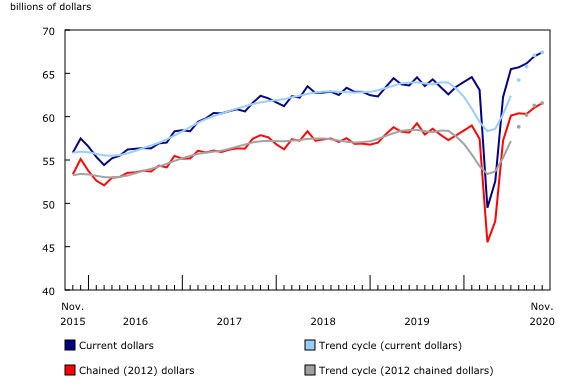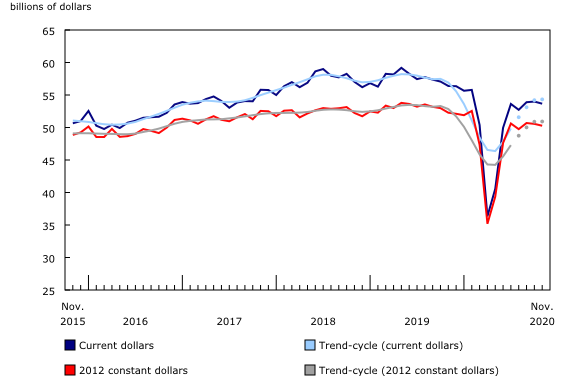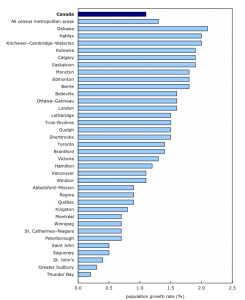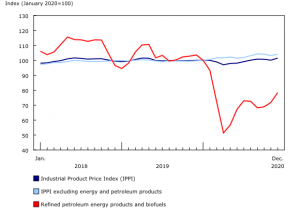
The Government of Ontario has issued an updated guidance document for public health and workplace safety measures (PDF link). Measures for businesses that will be in effect as of January 14, 2021 are as follows:
General Public Health Measures
Businesses Permitted to Open
- Restaurants, bars and other or drink establishments
- Driving instruction
- Retailers
- Supermarkets, convenience stores, indoor farmer’s markets and other stores that primarily sell food
- Pharmacies
- Discount retailers and big box stores that sell groceries
- Other retailers permitted to open under the Provincewide Shutdown rules
- Gas stations and other fuel suppliers
- Safety supply stores, businesses that sell, rent or repair assistive/mobility/medical devices, and optical stores that sell prescription eyewear to the public
- Stores that sell liquor, including beer, wine and spirits
- Shopping malls
- Cannabis retail stores operating under the authority of a retail store authorization issued under the Cannabis Licence Act, 2018
- Garden centres
- Motor vehicle sales
- Outdoor markets
- General Retail (all other retail, including hardware stores, pet food, computer stores, etc.):
- Services
- Rental and leasing services, including automobile, commercial and light industrial machinery and equipment rental
- Automated and self service car washes
- Laundromats and drycleaners
- Snow clearing and landscaping services
- Security services for residences, businesses and other properties
- Domestic services
- Vehicle and equipment repair and essential maintenance and vehicle and equipment rental services
- Courier, postal, shipping, moving and delivery services
- Funeral and related services
- Staffing services including providing temporary help
- Veterinary services
- Other businesses that provide for the health and welfare of animals, including farms, boarding kennels, stables, animal shelters and research facilities
- Businesses that provide pet training exclusively for service animals
- Hotels, motels, lodges, cabins, cottages, resorts and other shared rental accommodation, including student residences
- Seasonal campgrounds
- Community centres
- Mental health and addictions support services (e.g., Alcoholics Anonymous)
- Social services
- Cheque cashing services
- Financial services
- Real estate (including pre-sale construction)
- Information Technology (IT) services, including online services, software products and the facilities necessary for their operation and delivery
- Telecommunications providers and services (phone, internet, radio, cell phones etc.) and facilities necessary for their operation and delivery
- Newspapers, radio and television broadcasting
- Maintenance
- Transportation services
- Manufacturing
- Agriculture and food production
- Construction
- Resources and Energy
- Community Services
- Facilities for indoor or outdoor sports and recreational fitness activities
- Concert venues, theatres and cinemas
General Public Health Measures
- Each person responsible for a business or organization that is open shall ensure that any person who performs work for the business or organization conducts their work remotely, with limited exception, for instance, where the nature of their work requires them to be on site at the workplace.
- Every person in a place of business or facility that is open to the public shall maintain a physical distance of at least two metres from every other person except from their caregiver or other members of the person’s household, with limited exceptions.
- Every person in the premises of a business or organization that is open shall ensure that they wear a mask or face covering that covers their mouth, nose and chin, when they are in indoor areas of the premises, with limited exemptions.
- No person shall use an indoor or outdoor recreational amenity that is required to be closed.
- Limit for outdoor organized public events and social gatherings, must comply with requirements on physical distancing and face coverings: 5 people outdoors
Businesses Permitted to Open
Restaurants, bars and other or drink establishments
- Take out, drive through, and delivery permitted only (includes the sale of alcohol)
<h2id=”driving”>Driving instruction
- No in person driving instruction permitted except:
- For instruction for drivers of commercial motor vehicles
- Where the instruction is part of the Ontario Driver Certification Program administered by the Ministry of Transportation and involves the operation of motor vehicles for which:
- A class of driver’s licence other than Class G, G1, G2, M, M1 or M2 is required
- An air brake endorsement is required
- Or that is provided by a private career college, in accordance with certain conditions
Retailers
Supermarkets, convenience stores, indoor farmer’s markets and other stores that primarily sell food
Open for in person retail, subject to:
- Members of the public being able to maintain two metres physical distance from every other person in the business or facility and complying with face covering rules
- The number of persons occupying any room that is open to the public does not exceed 50% capacity of the particular room
- Curbside pick up and delivery permitted
Pharmacies
Open for in person retail, subject to:
- Members of the public being able to maintain two metres physical distance from every other person in the business or facility and complying with face covering rules
- The number of persons occupying any room that is open to the public does not exceed 50% capacity of the particular room
- Curbside pick up and delivery permitted
Discount retailers and big box stores that sell groceries
Open for in person retail, subject to:
- Members of the public being able to maintain two metres physical distance from every other person in the business or facility
- The number of persons occupying any room that is open to the public does not exceed 25% capacity of the particular room
- Curbside pick up and delivery permitted
Other retailers permitted to open under the Provincewide Shutdown rules
- Distancing and face covering rules apply
- Operating hours of 7am to 8pm
Gas stations and other fuel suppliers
Open for in person retail, subject to:
- Members of the public being able to maintain two metres physical distance from every other person in the business or facility and complying with face covering rules
Safety supply stores, businesses that sell, rent or repair assistive/mobility/medical devices, and optical stores that sell prescription eyewear to the public:
- By appointment only
- Limit the number of persons occupying any room that is open to the public in the business to not exceed 50% capacity of the particular room
- Curbside pick up and delivery permitted
- Operating hours of 7am to 8pm
Stores that sell liquor, including beer, wine and spirits:
- Limit the number of persons occupying any room that is open to the public in the business does not exceed 25% of the particular room
- Curbside pick up and delivery permitted
- Operating hours of 9am to 8pm
Closed for in person retail. Members of the public are only permitted to enter the mall to:
- Access businesses and organizations permitted to be open (e.g., pharmacy, dentist); food court open for take away, or by appointment only to facilitate pick up as set out below
- Access court services and government services
Shopping malls may establish:
- A single designated location inside the shopping mall for order pick up by patrons. Pick up inside the shopping mall must be by appointment only
- Any number of designated locations outside the shopping mall for curbside pick up by patrons
Members of the public are not permitted to loiter in any area of the shopping mall that is not related to the purpose of their visit.
Malls must open no earlier than 7 a.m. and close no later than 8 p.m., except to provide access to grocery stores/supermarkets, pharmacies, and healthcare providers that only have public entrances that face the interior of the mall.
Cannabis retail stores operating under the authority of a retail store authorization issued under the Cannabis Licence Act, 2018
- Curbside pick up and delivery only; Operating hours of 7am to 8pm
- An item may only be provided for curbside pickup if the patron ordered the item before arriving at the business premises
Garden centres
- Curbside pick up and delivery only; Operating hours of 7am to 8pm
- An item may only be provided for curbside pickup if the patron ordered the item before arriving at the business premises
Motor vehicle sales
Includes cars, trucks and motorcycles; recreational vehicles including motor homes; trailers and travel trailers; boats and other watercraft; and other motorized vehicles, including power assisted bicycles, golf carts, scooters, snowmobiles and all terrain vehicles
- By appointment only
- Members of the public must not be permitted where products are neither sold nor displayed for sale
- Subject to certain conditions related to test drives
- Operating hours of 7am to 8pm
Outdoor markets
Includes farmer’s markets and holiday markets only if they primarily sell food to the public
- Must require members of the public to remain outdoors at all times, including for curbside pick up or delivery
- Operating hours of 7am to 8pm
General Retail (all other retail, including hardware stores, pet food, computer stores, etc.):
- Curbside pick up or delivery only (in person retail shopping not permitted)
- An item may only be provided for curbside pickup if the patron ordered the item before arriving at the business premises
- Sales must be exclusively made so patrons are not required to enter the indoor area of the business, including curbside pick up or delivery
- Operating hours of 7am to 8pm
Services
Rental and leasing services, including automobile, commercial and light industrial machinery and equipment rental
Automated and self service car washes
- Permitted subject to distancing, masking, and other public health requirements
Laundromats and drycleaners
- Permitted subject to distancing, masking, and other public health requirements
Snow clearing and landscaping services
- Permitted subject to distancing, masking, and other public health requirements
Security services for residences, businesses and other properties
- Permitted subject to distancing, masking, and other public health requirements
Domestic services
- Only to support children, seniors or vulnerable persons, including housekeeping, cooking, indoor and outdoor cleaning and maintenance services
Vehicle and equipment repair and essential maintenance and vehicle and equipment rental services
Courier, postal, shipping, moving and delivery services
- Permitted subject to distancing, masking, and other public health requirements
Funeral and related services
- Permitted subject to distancing, masking, and other public health requirements
Staffing services including providing temporary help
- Permitted subject to distancing, masking, and other public health requirements
Veterinary services
- For services that are necessary for the immediate health and welfare of the animal only, or provided through curb side pick up and drop off of the animal
Other businesses that provide for the health and welfare of animals, including farms, boarding kennels, stables, animal shelters and research facilities
- Permitted subject to distancing, masking, and other public health requirements
Businesses that provide pet training exclusively for service animals
- Permitted subject to distancing, masking, and other public health requirements
Hotels, motels, lodges, cabins, cottages, resorts and other shared rental accommodation, including student residences
- Any indoor pools, indoor fitness centres , or other indoor recreational facilities that are part of the operation of these businesses, are closed
- Pre-arranged booking for short term rentals prohibited with exceptions for housing requirements
Seasonal campgrounds
- Must be made available only for trailers and recreational vehicles used by individuals in need of housing or are permitted to be there by seasonal contract
- Only campsites with electricity, water service and facilities for sewage disposal may be provided for use
- All recreational and other shared facilities, excluding washrooms and showers must be closed
- Other areas of the seasonal campground must be closed to the general public and must only be opened for the purpose of prepar ing the seasonal campground for reopening
- Permitted to open for the operation of child care centres and authorized recreational and skill building programs within the meaning of the Child Care and Early Years Act, 2014
Mental health and addictions support services (e.g., Alcoholics Anonymous)
- Permitted subject to distancing, masking, and other public health requirements to a maximum of 10 people
Social services
- Permitted subject to distancing, masking, and other public health requirements
Cheque cashing services
- Permitted subject to distancing, masking, and other public health requirements
Financial services
Capital markets and related securities trading and advisory services, Banking/credit union activities including credit intermediation, Insurance, Land registration services, Pension and benefits payment services, Financial services including payroll and payment processing and accounting and tax services
- Permitted subject to distancing, masking, and other public health requirements
Real estate (including pre-sale construction)
- No open houses; showing a property permitted by appointment only
- Permitted subject to distancing, masking, and other public health requirements
Telecommunications providers and services (phone, internet, radio, cell phones etc.) and facilities necessary for their operation and delivery
- Retail stores operated by a telecommunications provider or service may only permit members of the public to enter the premise s b y appointment and only for repairs or technical support
Newspapers, radio and television broadcasting
- Permitted subject to distancing, masking, and other public health requirements
Maintenance
- Maintenance, repair and property management services that manage and maintain the safety, security, sanitation and operation of institutional, commercial, industrial and residential properties and buildings permitted subject to distancing, masking, and other public health requirements
Transportation services
Businesses and facilities that provide transportation services, including transportation services provided by air, water, road, and rail, including taxis and other private transportation providers
- Permitted subject to distancing, masking, and other public health requirements
Support services for transportation services, including logistical support, distribution services, warehousing and storage, truck stops and tow operators, and services that support the operations and safety of transportation systems including maintenance and repairs
- Permitted subject to distancing, masking, and other public health requirements
Marinas, boating clubs and other organizations that maintain docking facilities for members or patrons with conditions
- Permitted subject to distancing, masking, and other public health requirements
Businesses that provide and support online retail, including by providing warehousing, storage and distribution of goods that are ordered
online
- Permitted subject to distancing, masking, and other public health requirements
Manufacturing
Businesses that extract, manufacture, process and distribute goods, products, equipment and materials, including businesses t hat manufacture inputs to other manufacturers (e.g. primary metal/ steel, blow molding, component manufacturers, chemicals, etc. that feed the end product manufacturer), regardless of whether those other manufacturers are inside or outside of Ontario, together with businesses that support and facilitate the movement of goods within integrated North American and global supply chains
- Permitted subject to distancing, masking, and other public health requirements
Agriculture and food production
Businesses that produce food and beverages, and agricultural products including plants, including by farming, harvesting, aquaculture, hunting and fishing
- Permitted subject to distancing, masking, and other public health requirements
Businesses that process, manufacture or distribute food, beverages, crops, agricultural products, animal products and by products
- Permitted subject to distancing, masking, and other public health requirements
Businesses that support the food or agricultural products supply chains and the health and safety of food, animals and plants
- Permitted subject to distancing, masking, and other public health requirements
Construction
Permitted construction activities or projects and related services, including land surveying and demolition services:
- Construction projects and services associated with the healthcare sector and long term care, including new facilities, expansion s, renovations and conversion of spaces that could be repurposed for health care space.
- Construction projects and services required to ensure safe and reliable operations of, or to provide new capacity in, provincial and municipal
infrastructure, including transit, transportation, energy, mining and justice sectors beyond the day to day maintenance.
- Construction projects and services that support the operations of, and provide new capacity in schools, colleges, universities, municipal infrastructure and child care centres within the meaning of the Child Care and Early Years Act, 2014.
- Construction projects under the Investing in Canada Infrastructure Program
- Construction projects and services that support the operations of Broadband internet and cellular technologies and services.
- Critical industrial construction activities required for:
- the maintenance and operations of petrochemical plants and refineries,
- significant industrial petrochemical projects where preliminary work has already commenced,
- industrial construction and modifications to existing industrial structures limited solely to work necessary for the production, maintenance, and/or enhancement of Personal Protective Equipment, medical devices (such as ventilators), and other identified products directly related to combatting the COVID 19 pandemic.
- Construction projects that are due to be completed before July 2021 and that would provide additional capacity in the production, processing, manufacturing or distribution of food, beverages or agricultural products.
- Construction projects that were commenced before January 12, 2021 , and that would:
- provide additional capacity for businesses that provide logistical support, distribution services, warehousing, storage or shipping and delivery services, or
- provide additional capacity in the operation and delivery of Information Technology (IT) services or telecommunications services.
- Residential construction projects where:
- a footing permit has been granted for single family, semi detached and townhomes
- the project is a condominium, mixed use or other residential building, or
- the project involves renovations to residential properties and construction work was started before January 12, 2021
- Construction to prepare a site for an institutional, commercial, industrial or residential development, including any necessary excavation, grading, roads or utilities infrastructure.
- Construction and maintenance activities necessary to temporarily close construction sites that have paused or are not active and to ensure ongoing public safety.
- Below grade multi unit residential construction projects, such as apartments and condominiums.
- Construction on any project intended to provide either,
- affordable housing, or
- shelter or supports for vulnerable persons,
- If the project is being funded in whole or in part by, or is being undertaken by, any of the following:
- the Crown in right of Canada or in right of Ontario,
- an agency of the Crown in right of Canada or in right of Ontario,
- a municipality,
- a service manager as defined in the Housing Services Act, 2011 , or
- a registered charity and not for profit within the meaning of the Income Tax Act
Resources and Energy
Businesses that provide and ensure the domestic and global continuity of supply of resources, including, resource exploration , m ining, forestry, aggregates, petroleum, petroleum by products and chemicals
- Permitted subject to distancing, masking, and other public health requirements
Electricity generation, transmission, distribution and storage and natural gas distribution, transmission and storage
- Permitted subject to distancing, masking, and other public health requirements
Businesses that deliver or support the delivery of community services including:
- Sewage treatment and disposal
- Collecting, transporting, storing, processing, disposing or recycling of any type of waste
- Potable drinking water
- Critical infrastructure repair and maintenance including roads, dams, bridges etc.
- Environmental rehabilitation, management and monitoring, and spill clean up and response
- Administrative authorities that regulate and inspect businesses
- Professional and social services that support the legal and justice system
- Government services including but not limited to policing and law enforcement, fire and emergency services, paramedics, coroner and pathology services, corrections and court services, licences and permits
- Allotment gardens or community gardens
- Permitted subject to distancing, masking, and other public health requirements
Facilities for indoor or outdoor sports and recreational fitness activities
Closure of all indoor and outdoor sports and recreational fitness facilities except for:
- Facilities operated or for the sole use of high performance athletes , including parasport athletes, and specified professional leagues (e.g.,
NHL, CFL, MLS, NBA) and
- Facilities opened solely for specified purposes (e.g. child care)
Community centres and multi purpose facilities (e.g., YMCA) allowed to be open for permitted activities (e.g., child care services, mental health and addiction support services [limited to 10 people maximum], social services)
The following outdoor recreational and fitness facilities may remain open, provided that all persons maintain a two-metre distance, that team sports are not played, and all associated showers, locker rooms, clubhouses, etc. remain closed:
- Parks and recreational areas
- Baseball diamonds
- Batting cages
- Soccer, football and sports fields
- Tennis, platform tennis, table tennis and pickleball courts
- Basketball courts
- BMX parks
- Skate parks
- Frisbee golf locations
- Cycling tracks and bike trails
- Horse riding facilities
- Shooting ranges, including those operated by rod and gun clubs
- Ice rinks
- Snowmobile, cross country, dogsledding, ice skating and snow shoe trails
- Playgrounds
- Portions of parks or recreational areas containing outdoor fitness equipment
- Tobogganing hills and skating trails
Concert venues, theatres and cinemas
Closed, including drive in or drive through events.
All businesses and facilities not mentioned here will proceed with regulations as set out in the Provincewide Shutdown.






 According to flash estimates, the Industrial Product Price Index (
According to flash estimates, the Industrial Product Price Index (
